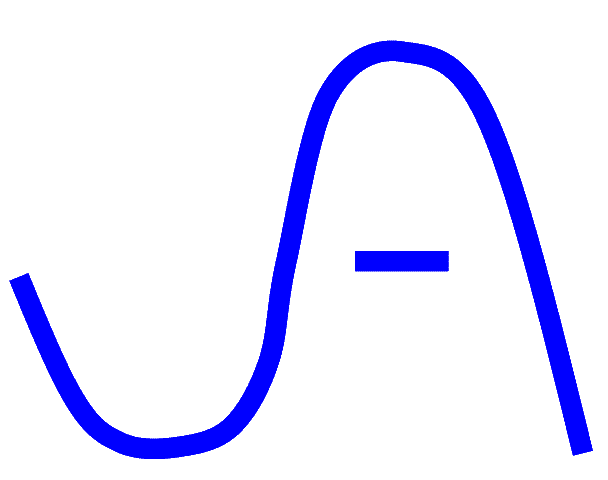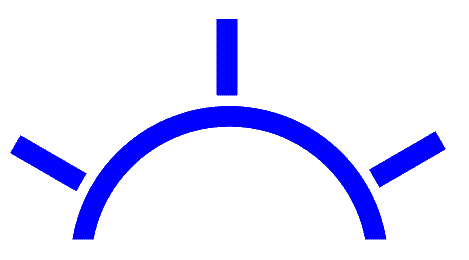Click on brand to link to another ranch's information.



Is Cloud Seeding Harmful?
by
Johnny Micou
When studying the efficacy and consequences of cloud seeding experiments, the experimenters tend to be biased in saying cloud seeding with silver iodide enhances precipitation without negative consequences. However, much of the literature substantiates that not only does cloud seeding fail to achieve the desired effect, it also yields harmful consequences. Some of these consequences include rain suppression, flooding, tornadoes, and silver iodide toxicity. (1,2,3)
The harm of rain suppression is obvious to everyone. For farmers and ranchers, this would mean no rain, no gain -- an economic loss. Losses would include poorer crop harvest, lack of range vegetation, and a loss of hunting lease income due to wildlife reduction. This is particularly true for ranches in western Potter County, an area PGCD has called “geographically handicapped.”(2) Most ranchers and farmers do not choose to take the gamble on their land and livelihood based on experimentation.(1,2)
The harmful effects of silver iodide are insidious.(3) Yet, according to the web site of the PGCD, the effects are so minimized that the following is stated: “The concentration of iodide in iodized salt used on food is far above the concentration found in rainwater from a seeded cloud.”(4) In addition, in early December of 2002, at the Amarillo meeting jointly conducted by the Panhandle Groundwater and the North Plains Groundwater Conservation Districts, one representative stated that silver iodide was good for the heart. In a private conversation, another explained that silver miners live longer. Iodized salt may seem benign; however, some states such as Colorado have outlawed the use of salting icy roads.(5) Among harmful effects, salt is toxic to the water and land.(5)
The Office of Environment, Health and Safety, UC Berkeley, rates silver iodide as a Class C, non-soluble, inorganic, hazardous chemical that pollutes water and soil.(8) It has been found to be highly toxic to fish, livestock and humans.(6,7,8,9) Numerous medical articles demonstrate that humans absorb silver iodide through the lungs, nose, skin, and GI tract.(7,8,9) Mild toxicity can cause GI irritation, renal and pulmonary lesions, and mild argyria (blue or black discoloration of the skin). Severe toxicity can result in hemorrhagic gastroenteritis, shock, enlarged heart, severe argyria, and death by respiratory depression.(8)
Moreover, a key manufacturer of silver iodide for weather modification, Deepwater Chemicals, warns of potential health effects of silver iodide in their Material Safety Data Sheet as follows:
Chronic Exposure/Target Organs: Chronic ingestion of iodides may produce “iodism”, which may be manifested by skin rash, running nose, headache and irritation of the mucous membranes. Weakness, anemia, loss of weight and general depression may also occur. Chronic inhalation or ingestion may cause argyria characterized by blue-gray discoloration of the eyes, skin and mucous membranes. Chronic skin contact may cause permanent discoloration of the skin.(10)
Under the guidelines of the Clean Water Act by the EPA, silver iodide is considered a hazardous substance, a priority pollutant, and as a toxic pollutant.(10) Some industries have learned this all too well.
Obviously the cloud-after-cloud, year-after-year use of cloud seeding could lead to an insidious, cumulative effect. Especially when the same area is repeatedly seeded. If the toxicity manifests in pollution and illnesses, the effects may not be reversible. At this point, the PGCD monitoring of silver iodide toxicity is so small as to be nonexistent and flawed. C.E. Williams states, “water samples taken after rain from seeded clouds have revealed no silver iodide.”(11) This is misleading.
According to the PGCD, “Every year, two viable samples of rainwater must be sent to a laboratory for analysis and in return forwarded to TNRCC to ensure that the water is not contaminating the area.”(4) This is faulty sampling and testing over a seven county area. If PGCD can not control where the seeded clouds dumps water, how can they take only two rain samples per year to test for silver concentrates of the clouds they seeded? At least it is an admission that silver toxicity is an issue. Such misleading statements based on faulty data are not uncommon to the PGCD. In 2001, rainfall amounts were grossly overinflated in multiple rain gauges.(2,11) Such overstatements are to prop up the benefits of their program while denying the adverse effects.
To effectively monitor the levels of silver toxicity, at the very minimum, water samples should be taken on a monthly basis from every dam, creek, stock tank, and other water capture places in the respective district while cloud seeding is being conducted. Also, soil samples should taken. According to the Colorado National Park Service and the Federal Remediation Technologies Roundtable, the result of cloud seeding with silver iodide and runoff have adverse effects on the water, soil, and flora and fauna. (7,9) “Elevated silver concentrations in biota occur in the vicinities of sewage outfalls, electroplating plants, mine waste sites, and silver iodide-seeded areas.”(12) In fact, in the 1980s the CDC had hoped that silver toxicity would be reduced nationally based on a reduction of cloud seeding activity.(13)
“Fallout from cloud seeding with silver iodide is not always confined to local precipitation; silver residuals have been detected several hundred kilometers downwind of seeding events.”(7,13) “Anthropogenic sources associated with the elevated concentrations of silver in nonliving materials include smelting, hazardous waste sites, cloud seeding with silver iodide, metals mining, sewage outfalls, and especially the photoprocessing industry.”(7,13) Silver leaches into groundwater, streams, soil, and the root systems of plants.(7,13)
“Silver was measured in particular samples from rural and urban area both adjacent to and removed from activities such as metal smelting, refining, and silver iodide cloud seeding” and found “concentrations in precipitation resulting from seeding clouds with silver iodide were 10-450 ng/L compared with concentrations of 0-20ng/L without cloud seeding (Cooper and Jolly 1970).”(13) That translates in 10 to 225 times greater silver concentration in those areas.
“The most likely sources of higher than background levels of silver for the general population are ingestion of contaminated food and drinking water (Letkiewicz et al. 1984).”(13) Additionally, “crops grown on soils with elevated silver concentrations or exposed to high ambient atmospheric concentration are likely to become enriched with silver (Ragaini et al. 1977; Ward et al., 1979).”(13)
If the public is to allow the spreading of this toxic material on an experimental basis, monitoring should be required and published to protect the public health and private lands. The cloud seeding program is designed with the use of public money over private land without voter approval or landowners permission. If private land or public health is compromised, then the program should be held liable. In the past, a Texas rancher was able to stop cloud seeding over private land based on trespassing and nuisance law. However, there are greater issues at stake.
The question is not that is cloud seeding harmful, but how harmful. It is obvious that it is significantly harmful. So far, programs such as PGCD have not provided effective monitoring and sampling to demonstrate that the silver concentrations in the water and soil caused by cloud seeding are at “safe levels.” To test for silver in the water and soil, the methods are sophisticated and require the latest in technology, along with standards set by such agencies as the EPA.(7) Without such testing, such programs must be stopped immediately. There is too much at risk for their experimentation.
http://ranches.org/experiment.htm (1)
http://ranches.org/rainmaking_experiment_endangers.htm (2)
http://webserv.chatsystems.com/~doswell/wxmod/wxmod.html (3)
http://www.panhandlegroundwater.org/ (4)
http://www.cerf.org/pdfs/reports/40410ch1.pdf (5)
http://www.ehs.berkeley.edu/pubs/guidelines/draindispgls.html (6)
http://www.nature.nps.gov/hazardssafety/toxic//silver.pdf (7)
http://www.silvermedicine.org/whosilvercompoundtoxicity.html (8)
Amarillo Globe-News, Petition requests end to cloud seeding, by Rick Storm, December 26, 2002 (11)
http://www.atsdr.cdc.gov/toxprofiles/tp146-c5.pdf (13)
|
Click on brand to link to another ranch's information. |
||||
 |
 |
 |
||